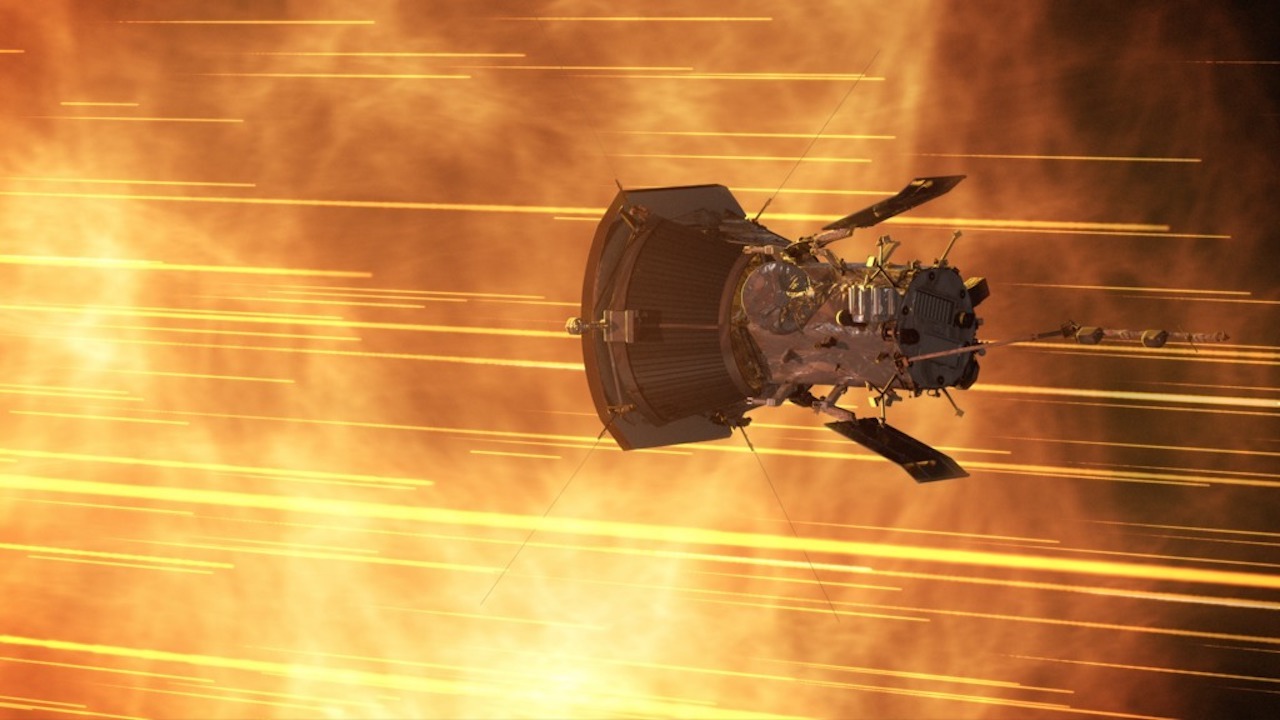January 28, 2022 Show Notes
Story 1: NASA’s Parker Solar Probe is the first spacecraft to visit the sun’s atmosphere
Source: ScienceNews.org Story by Lisa Grossman
Link: https://bit.ly/3E4iWF1
NASA held a press briefing in December highlighting data from its Parker Solar Probe that earlier this year became the first craft to enter the sun’s atmosphere.
The Parker Solar Probe left interplanetary space and entered the sun’s atmosphere this past April where it took measurements of exactly where this atmospheric boundary lies, which is called the Alfvén critical surface.
And this entry point to the sun’s atmosphere is about 8 million miles above the sun’s surface.
Exploring this boundary was one of the Parker Solar Probe’s main goals when it launched in 2018.
This outer edge of the sun’s atmosphere is important because it marks where packets of plasma can separate from the sun and become part of the solar wind, which is the speedy stream of charged particles that constantly emanates from the sun.
Since the solar wind can potentially damage Earth’s satellites and negatively impact life on our planet, scientists want to pinpoint exactly how the wind gets started to better understand how it can impact Earth.
Story 2: Canon’s New Sensor Could Revolutionize Low-Light Photography
Source: Gizmodo.com Story by Andrew Liszewski
Link: https://gizmodo.com/canons-new-sensor-captures-full-color-images-in-near-to-1848179414
According to Nikkei Asia [an online news magazine], Canon is poised to shake up the digital imaging industry next year with a new sensor capable of capturing
full-color images at “one-tenth the brightness conventional sensors need.”
This could revolutionize autonomous driving and even security systems.
The most common solution to low-light photography is to rely on night vision technology which captures infrared light instead of the light that falls in the visible spectrum.
It results in high-contrast imagery where it’s easy to discern objects and finer details.
But there’s no color information, and that’s what Canon is trying to remedy with its new sensors.
Traditional sensors produce images based on the number of photons each pixel detects over a period of time—the more light and photons available, the better the results will be.
Canon’s new sensor uses an electronic element in every pixel that can multiply and generate an electrical pulse when just a single photon hits it, giving it much greater sensitivity in near total darkness.
Story 3: Sony reveals 8K VR headset prototype
Source: Eurogamer.net Story by Ed Nightingale
Link: https://www.eurogamer.net/articles/2021-12-08-sony-reveals-prototype-for-8k-vr-headset
See video here: https://www.youtube.com/watch?v=QkJJA0PCOxI
Sony revealed a prototype for an 8K Virtual Reality headset as part of its ‘Sony Technology Day’ online demonstration event staged last month.
8K refers to an ultra-high-definition display with a width of approximately 8,000 pixels. That’s double the resolution of the 4K TVs you see in stores today.
The prototype Sony VR headset uses an organic light-emitting diode micro display for each eye.
Each individual eye micro display produces 4K visuals, and combined the result is an 8K extremely realistic visual experience.
The use of small micro displays also helps make the VR headset smaller, lighter, and more comfortable.
During the event Sony outlined how the upcoming VR headset could be used for
more than gaming. For example, for medical training, design engineering and live streaming entertainment experiences.
However, no pricing and availability dates were revealed.
Story 4: Designers hope hydrogen-powered plane will fly halfway around the world without refueling
Source: TechCrunch.com Story by Kris Holt
Researchers around the world continue to look at the potential viability of hydrogen-powered commercial airliners – and here’s why: Commercial electric planes won’t be feasible until batteries become more powerful and lightweight.
Hydrogen-powered flight is another possible way forward, and a research group, the FlyZero project, which is led by the Aerospace Technology Institute and funded by the UK government, recently disclosed a concept for a liquid hydrogen-powered midsize aircraft.
It said the plane would be able to fly 279 passengers non-stop from London to San Francisco, or from London to Auckland, New Zealand with one stop for refueling.
The aircraft, which has a 54-meter wingspan [177 feet] with two turbofan engines, would offer the “same speed and comfort as today’s aircraft” but with zero carbon emissions.
Remember – the exhaust from a hydrogen-powered vehicle is heat and water vapor.
We’re years away from commercial hydrogen aircraft becoming a reality, though. The refueling infrastructure doesn’t exist yet and hydrogen is more expensive and difficult to store onboard than kerosene-based fuel.
However, the Aerospace Technology Institute expects that, by the middle of the 2030s, efficient hydrogen planes might be a more economical option than current planes.

